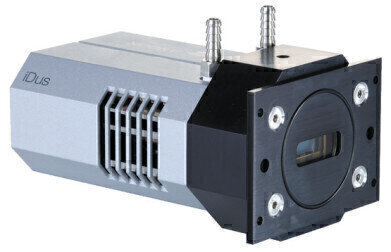News & Views
1,000-fold Response Increase Shown in Nanoantenna Arrays
Sep 28 2011
Nanoscale antennas hold out the promise of higher resolution optical imaging of nano objects, including proteins and DNA molecules, and converting solar energy into electricity at very high efficiencies. Now, a team from the University of Illinois led by Nicholas Fang and Kimani Toussaint has demonstrated a 1,000-fold increase in the UV-Visible optical response of devices based on nanoantennas periodic arrays.
First proposed by Robert L. Bailey in 1972, nanoantennas are analogous to radio and microwave antennas, except that they can absorb a specific range of wavelengths of light dependant on their geometry and size. Bowtie NanoAntennas consist of two triangular pieces of gold with their tips facing each other in the shape of a miniature bowtie. They take energy from the illuminating beam and compress it into the nanometre gap separating the two triangles. The result is a concentrated spot of light that is many times more intense than the incoming laser beam.
Fang and Toussaint’s team fabricated 50nm thick gold Bowtie NanoAntenna (BNA) composed of two equilateral triangles with 140nm sides separated by a 20nm gap and acquired the emission spectra when illuminated with 780nm laser light using an Andor iDus DU420A-BU camera.
When individual antennas were gathered into arrays with 500 nm centre-to-centre spacing, they found that the large local intensity enhancement of the single BNA was boosted by a factor of 1,000. More importantly, resonantly excited arrays exhibited uniform emission over a spectral region of more than 250nm. The team believes that optimisation of the nanoantenna array periodicity may lead to even further efficient devices.
Recent studies have also suggested the possible development of nanoantenna-based solar energy collection
devices with conversion efficiency up to 80% - compared to 20% for traditional solar cells - as well as the use of
nanoantennas arrays as nanoscale light sources to scan and image biological molecules or synthetic nano-objects such as carbon nanotube bundles.
Andor’s modular Spectroscopy solutions encompass a wide range of high performance CCD, ICCD and EMCCD detectors, as well as a comprehensive range of Research-grade spectrograph platforms.
Digital Edition
Lab Asia 31.2 April 2024
April 2024
In This Edition Chromatography Articles - Approaches to troubleshooting an SPE method for the analysis of oligonucleotides (pt i) - High-precision liquid flow processes demand full fluidic c...
View all digital editions
Events
May 05 2024 Seville, Spain
InformEx Zone at CPhl North America
May 07 2024 Pennsylvania, PA, USA
May 14 2024 Oklahoma City, OK, USA
May 15 2024 Birmingham, UK
May 21 2024 Lagos, Nigeria













.jpg)




